Welcome to the perfect resource for boosting your mountain biking skills. This guide aims to help bikers of all levels improve. It gives you the knowledge and techniques to gain confidence and skill on different terrains.
Inspiration comes from “Mastering Mountain Bike Skills” by Brian Lopes, a biking legend. Lopes has won 19 titles, including four UCI Mountain Bike World Champion titles. With praise from stars like Nino Schurter and Cédric Gracia, this guide combines expert advice for skilled trail riding.
This guide will show you the basics of mountain biking, like picking the right bike and nailing cornering techniques. Get set for an adventure as we dive into mountain biking!
Understanding Mountain Biking Basics
Mountain biking mixes physical challenges with the joy of being outside. Beginners will find that learning about the sport’s basics can make their rides safer and more enjoyable. We will explore essential gear, offer tips for choosing your first bike, and share advice on keeping your bike in top condition.
Essential Gear for Beginners
Choosing the right gear is key for a comfortable and safe ride. Important items include:
- Helmets: A proper helmet is crucial for head protection.
- Gloves: They provide better grip and protect your hands.
- Hydration Packs: Keeping hydrated boosts your performance.
- Cycling Shoes: The right shoes improve pedal power.
Using recommended gear can greatly enhance your first experiences on the trails.
Choosing the Right Bike
Picking a bike involves considering its shape, the kind of suspension it has, and how you like to ride. A versatile choice for beginners is the Ibis Ripmo V2 XT. It’s good for various terrains. Knowing the difference between Cross-Country, Enduro, and Downhill biking helps you choose wisely. For starters, Cross-Country biking might be the easiest to get into.
Bike Maintenance Tips
Keeping your bike well-maintained is crucial for its performance and your safety. Some beginner-friendly tips include:
- Always check your tire pressure before a ride.
- Keep your chain clean and lubricated to last longer.
- Make sure your brakes and gears are working well.
- Learn some basic repairs to fix small problems quickly.
For deeper insights into improving your biking skills, check out resources that help beginners evolve into advanced riders. One such resource is the master list to learning how to do everything in mountain biking.
The Importance of Proper Body Position
Mastering the right body position in mountain biking boosts control, comfort, and performance. It improves balance and helps absorb bumps. By using the correct techniques, you make climbing and descending safer and more fun.
Optimal Riding Posture
When climbing, balance your weight evenly, leaning slightly forward for front wheel traction. Bend your knees, keeping your core over your feet. On descents, the method changes.
Keep heels down and core centered with bent arms for descending. This helps you handle the bike smoothly on rough paths.
Benefits of a Relaxed Grip
A relaxed grip on the bike is key for efficient riding. Tight arms can cause tiredness and make control harder. Light hands and bent elbows improve your ability to adapt to sudden trail changes.
This approach reduces strain and boosts stability when going downhill. Lowering wrists while climbing helps with smooth steering and managing the bike’s momentum.
Mastering Cornering Techniques
Cornering is key in mountain biking. It hugely impacts race times and how much fun riding is. Learning about different cornering paths, braking right before a turn, and keeping speed in the corners boosts your skills. Let’s explore advanced techniques that will make your mountain biking better.
Inside vs Outside Lines
Choosing the correct path in a turn can change your speed and control. Taking the inside line means a tighter turn and keeping speed. But, the outside line gives a smoother ride in wider turns. Knowing when to use each line is essential for tackling tricky corners.
Braking Techniques Before a Turn
Right braking before a turn matters for balance and control. Wise bikers brake carefully before a corner. This makes you stable and stops you from skidding. Slowing down smoothly makes it easier to change direction fast, so you keep your speed in the turn.
How to Maintain Speed Through Corners
Keeping your speed in turns depends on your body and how you handle the bike. You should lean into the turn, position your body correctly, and push down on the outside foot. This keeps you stable. Choosing the right gear before a turn helps with your speed as you leave. Not pedalling in the turn is best to avoid crashes. Then, you can speed up again safely.
Mountain Biking Skills Guide: Advanced Techniques
For seasoned riders ready to elevate their skills, mastering advanced mountain biking techniques is essential. Focusing on descending tips and navigating technical terrain can significantly enhance both performance and enjoyment on the trails. Each aspect requires careful attention to body position, line choice, and rhythm when tackling complex descents or challenging landscapes.
Descending with Confidence
Descending can be daunting for many mountain bikers. Embracing confidence while navigating downhill necessitates a solid grasp of the bike’s dynamics. Key descending tips include:
- Adjusting body position by shifting weight back and lowering the centre of gravity.
- Employing brake modulation to maintain control without losing speed.
- Practising bike-body separation, allowing the bike to move beneath the rider while absorbing shocks and undulations.
Focusing on these elements can help riders transition smoothly through steep descents, ultimately leading to a more exhilarating ride.
Navigating Technical Terrain
Navigating technical terrain requires skillful execution of advanced mountain biking techniques. Riders should consider the following strategies:
- Identifying line choices that optimise balance and momentum.
- Leaning the bike into turns rather than merely moving the handlebars, providing better grip and stability.
- Practising sinking into the bike during rocky passages, keeping limbs relaxed for improved absorption of bumps.
Patience and perseverance are fundamental. Riders aiming to improve must understand the importance of mastering each technique step by step. Seeking advice from experienced coaches, like those in the DEVO programme, can speed up skill development and fitness. By refining these technical terrain navigation skills, riders can enhance their mountain biking journey and approach trails with confidence.
The Role of Vision in Mountain Biking
Vision plays a key role in mountain biking. It helps riders anticipate and react to the changing ground. This lets them control their bike well. There are special exercises to better these visual skills. They improve focus, balance, and reflexes. These are vital for overcoming obstacles safely and effectively.
Looking Ahead for Better Control
It’s important to look ahead, not just at your front wheel. This helps manage speed and control. It also boosts spatial awareness for quick responses to obstacles. Keeping an eye on the environment is essential. It lets riders know where they are in relation to the path.
Reading Trail Conditions Effectively
Understanding trail conditions is key to a good ride. Spotting variations in the trail, like mud or rocks, allows for quick technique adjustments. By using both focal and ambient vision, potential hazards can be spotted early. To learn more, visit this guide on mountain biking techniques. Improving visual control makes for a better, more confident biking session.
FAQ
What essential gear do I need as a beginner in mountain biking?
If you’re just starting with mountain biking, you need a few essential items. A helmet, gloves, hydration packs, and proper cycling shoes are important. They keep you safe and comfortable while riding the trails.
How do I choose the right bike for mountain biking?
Choosing the right bike depends on several things. Look at the bike’s shape, the type of suspension, and how you like to ride. The Ibis Ripmo V2 XT is great for different surfaces. It makes your ride enjoyable.
What bike maintenance tips should I follow?
Keeping your bike in good shape is crucial. Make sure to check the tire pressure, clean and oil the chain, and check the brakes and gears regularly. This ensures your bike is ready for every adventure.
Why is body positioning important while riding?
Your position on the bike helps you stay balanced and in control. It’s especially important when the ground changes. Being in the right position when going up or down hills makes your ride better.
How can I improve my cornering techniques?
Improving cornering is all about practice. Try different paths through corners to find what’s fastest and most stable. And remember to brake before you turn. This helps you stay on track and react quickly.
What advanced skills should I focus on for descending?
Getting better at going downhill takes focus. Pay attention to how you stand, how you use the brakes, and choosing your path. Learning to ride over difficult spots, like rocky areas or steep slopes, also helps a lot.
How does vision impact my mountain biking performance?
Being able to see ahead when you ride is key. It helps you stay in control and react fast. Watching the trail lets you adjust to things like mud and rocks quickly. This makes your ride smoother and safer.


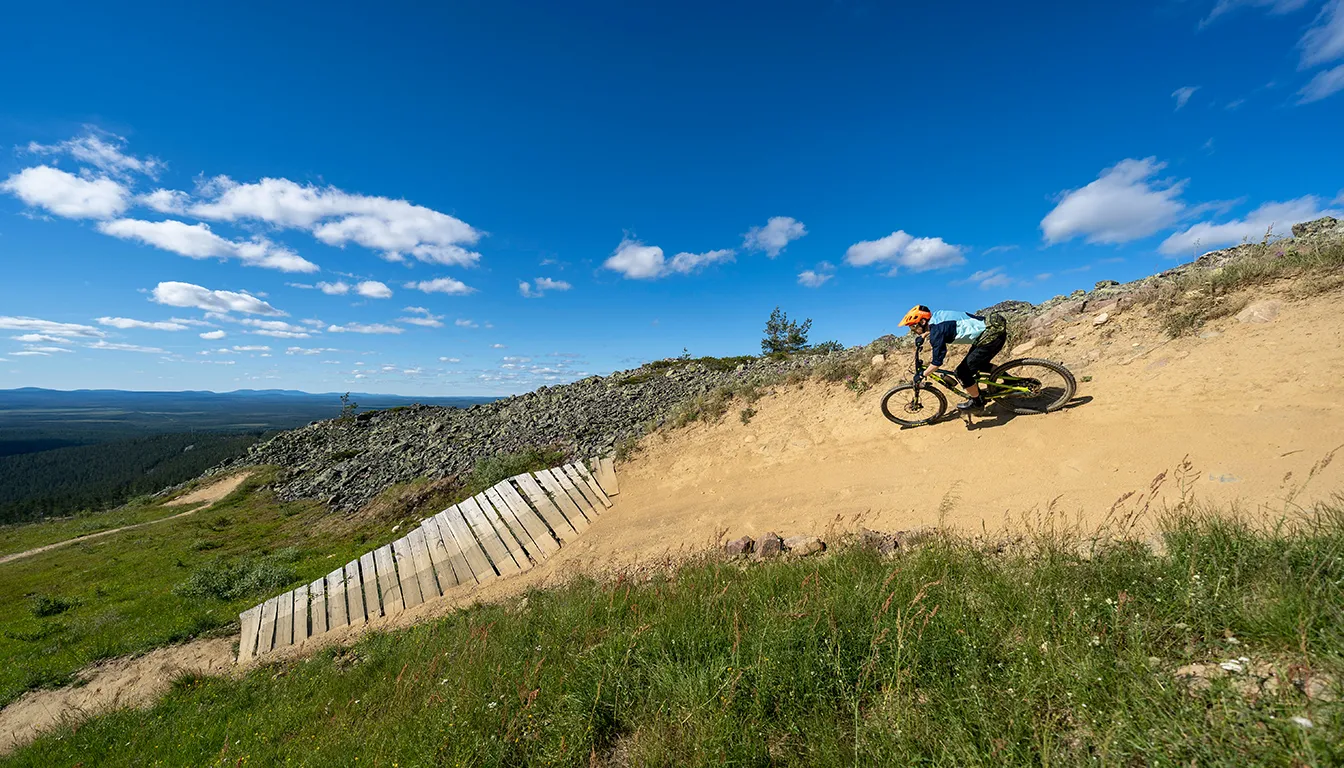
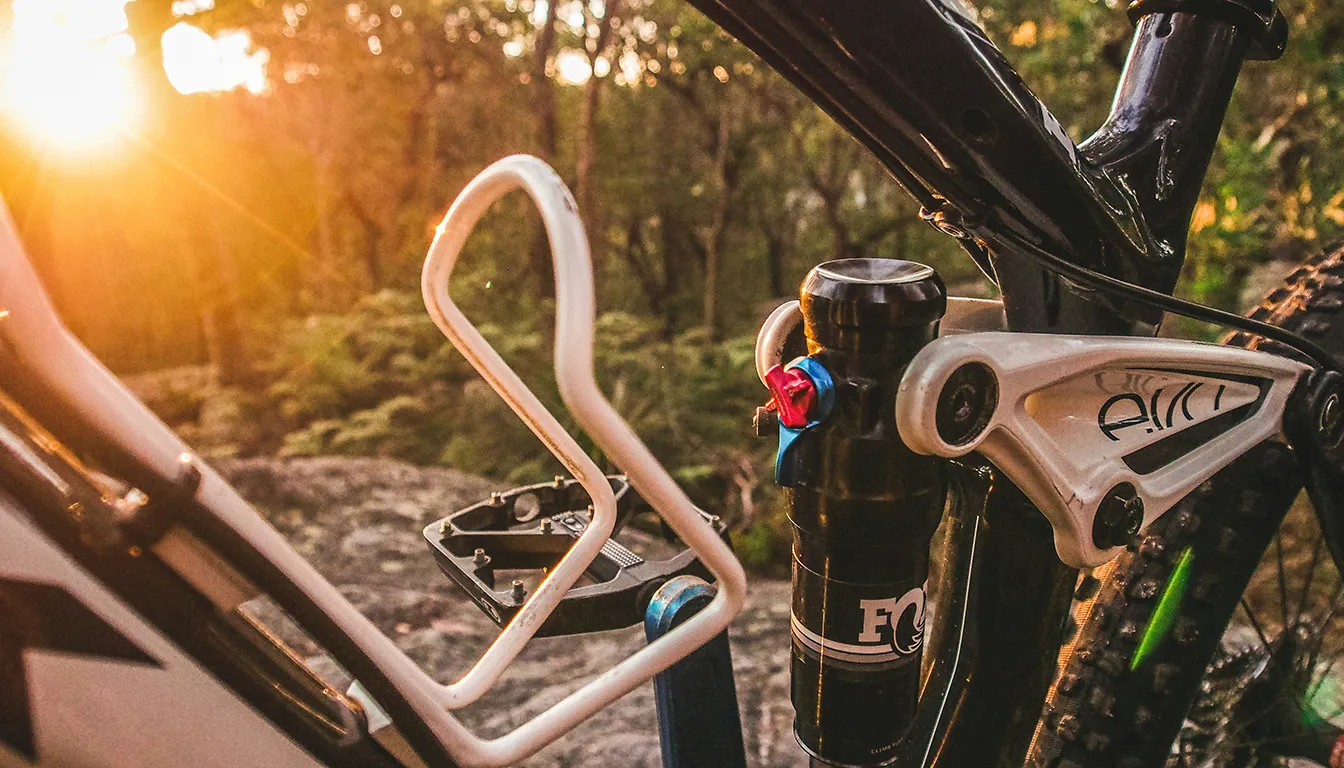
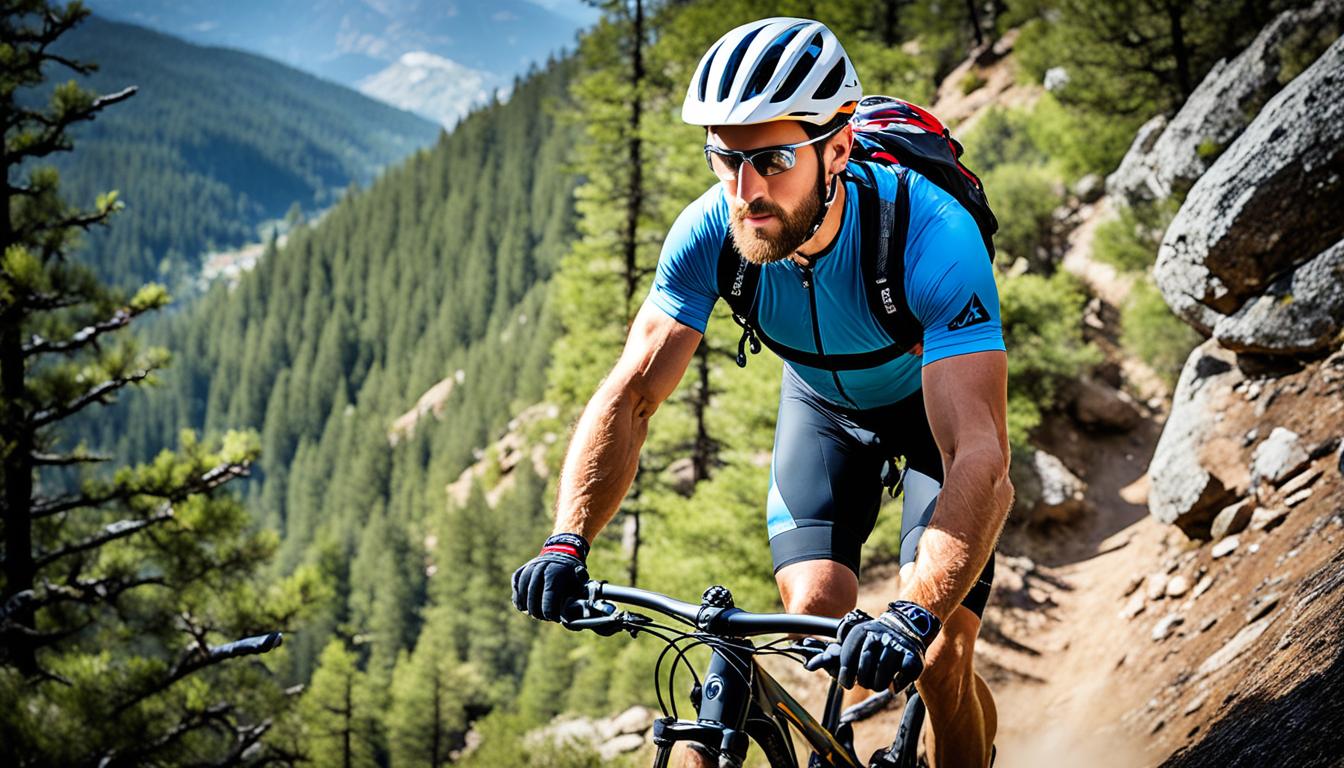
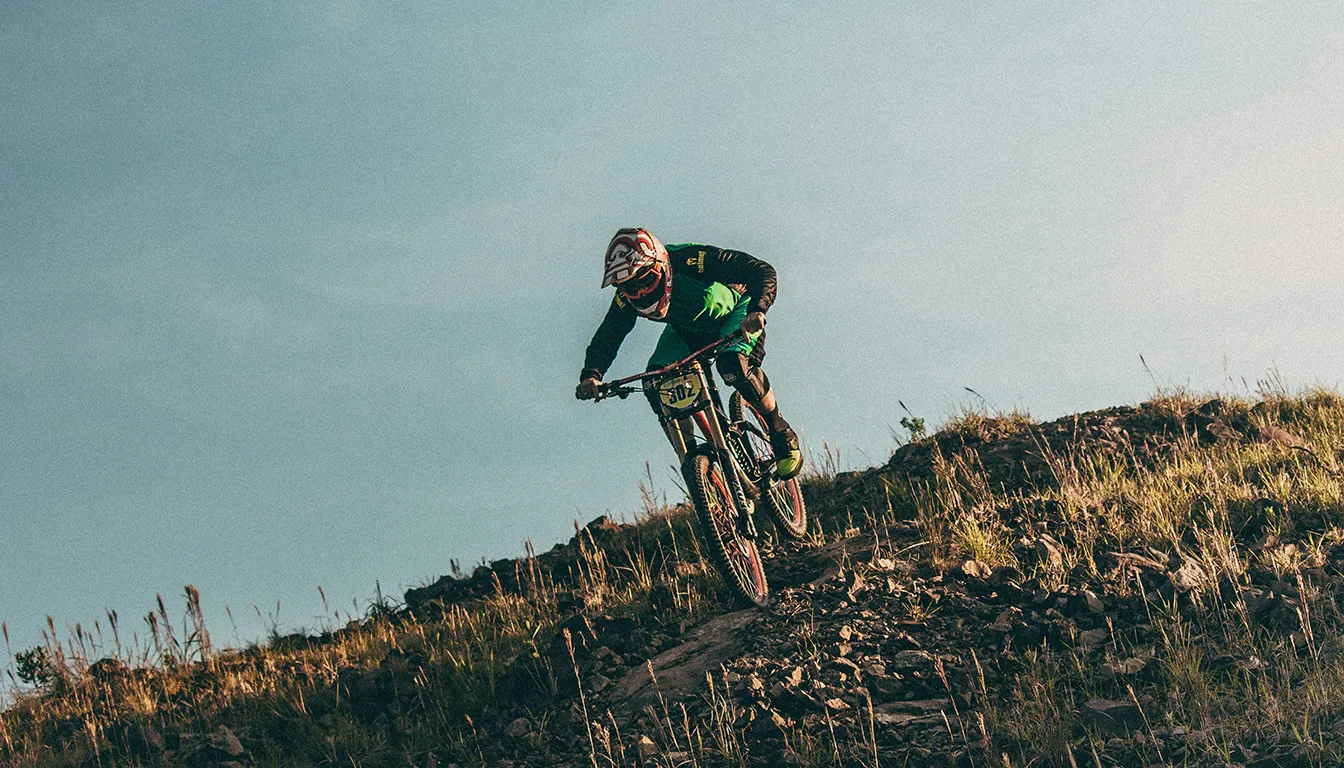
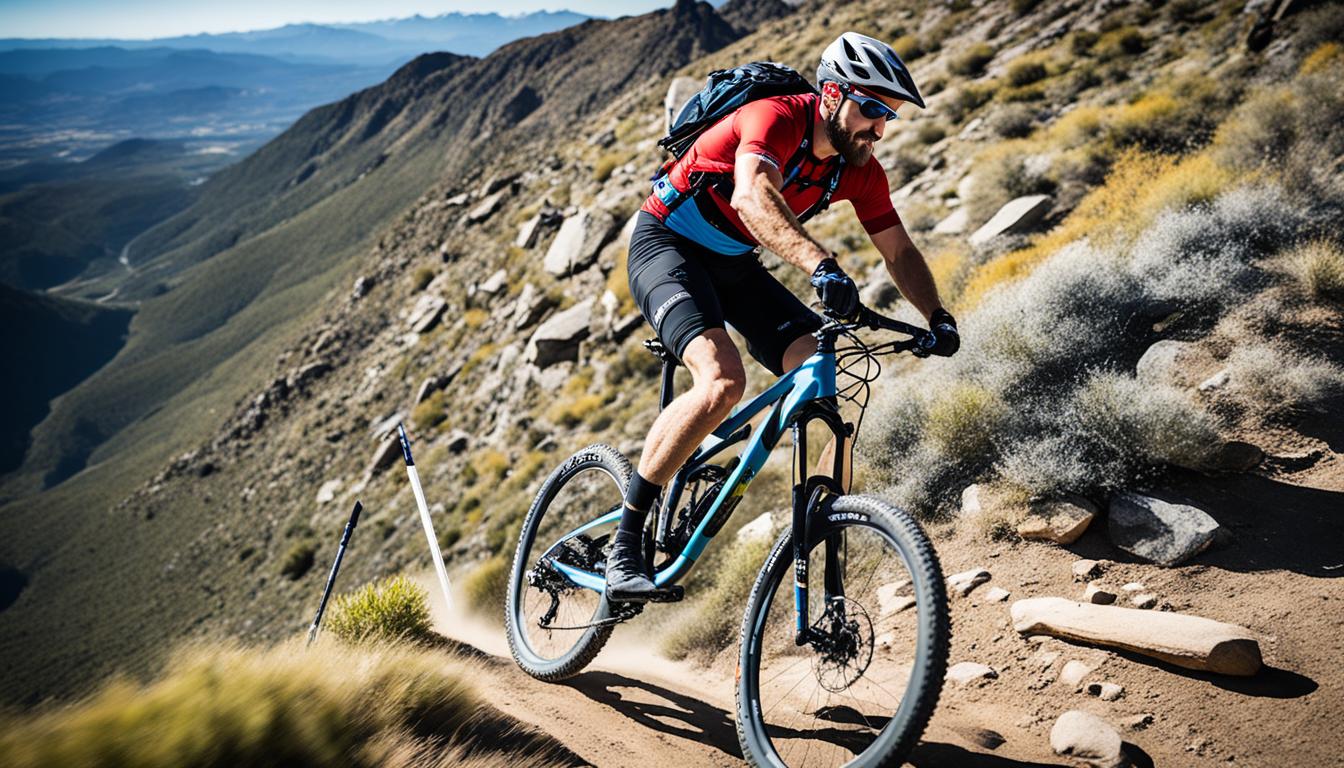
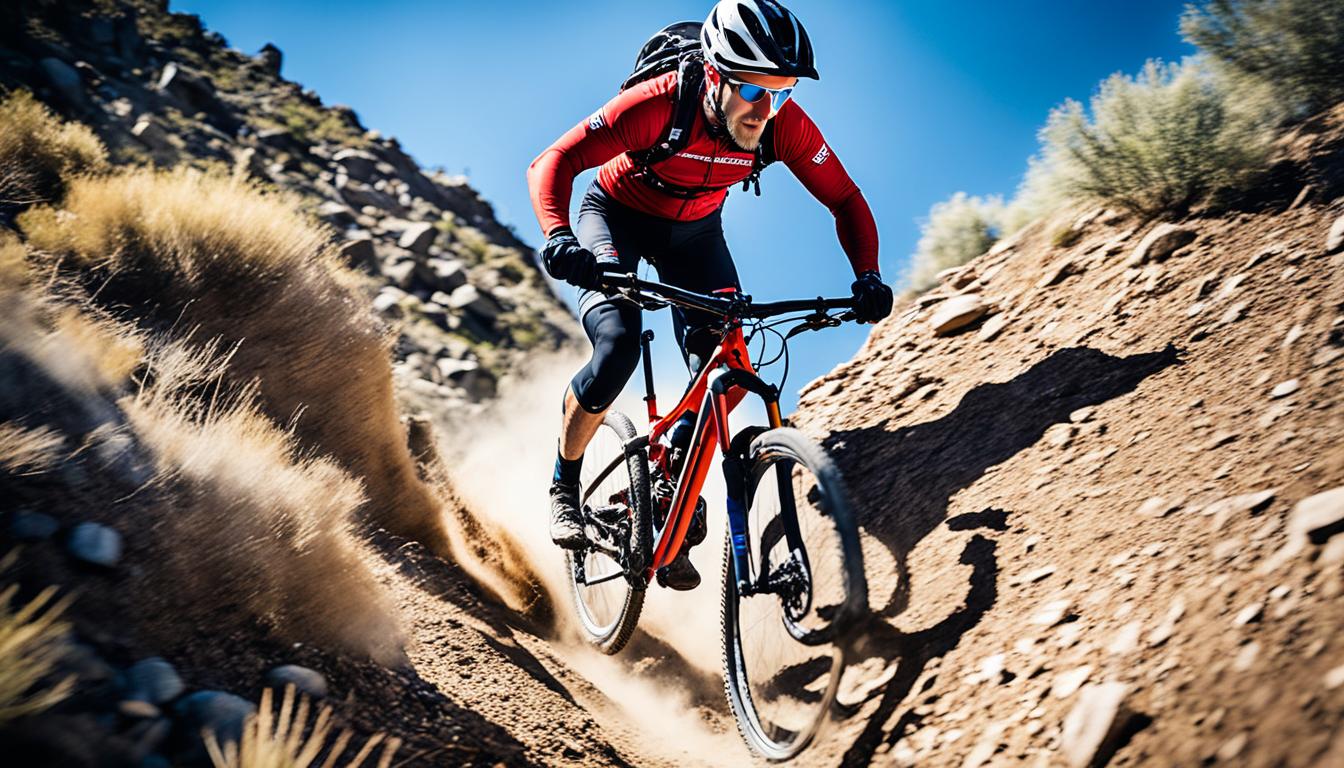
One thought on “The Ultimate Mountain Biking Skills Guide”